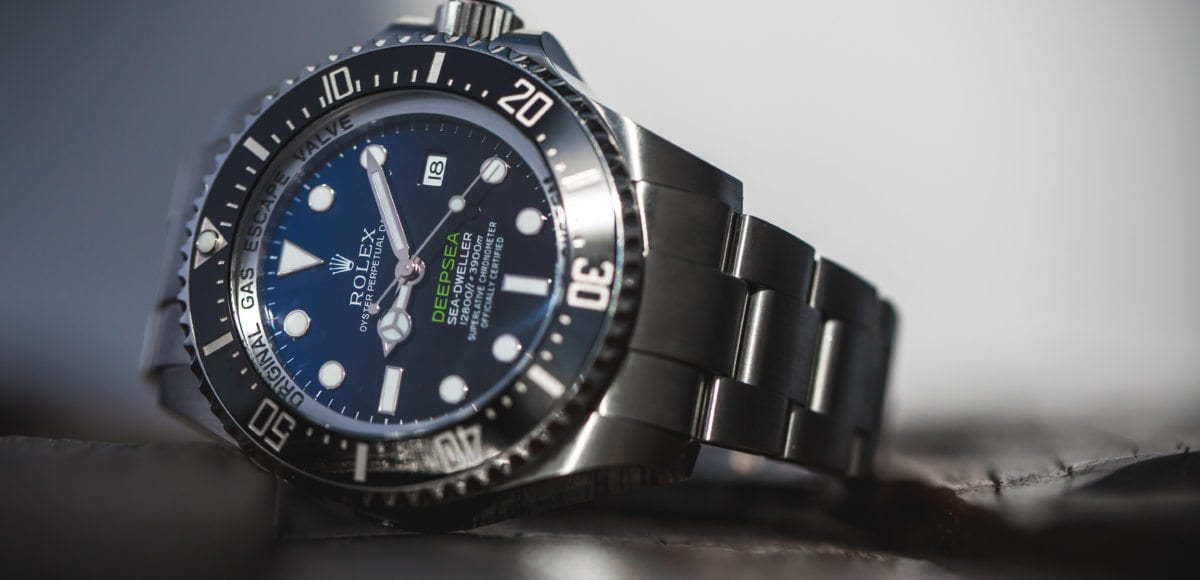“It’s a bottomless pit, baby. Two-and-a-half miles straight down.”
Rolex has always been at the forefront of human endeavor.
In 1927, when Mercedes Gleitze became the first British woman to successfully swim the English Channel, she wore a Rolex Oyster, the world’s first “waterproof” watch. 20 years later, Chuck Yeager was wearing a Rolex when he smashed the sound barrier. When Edmund Hillary reached the summit of Mount Everest in 1953, he had a Rolex on his wrist.
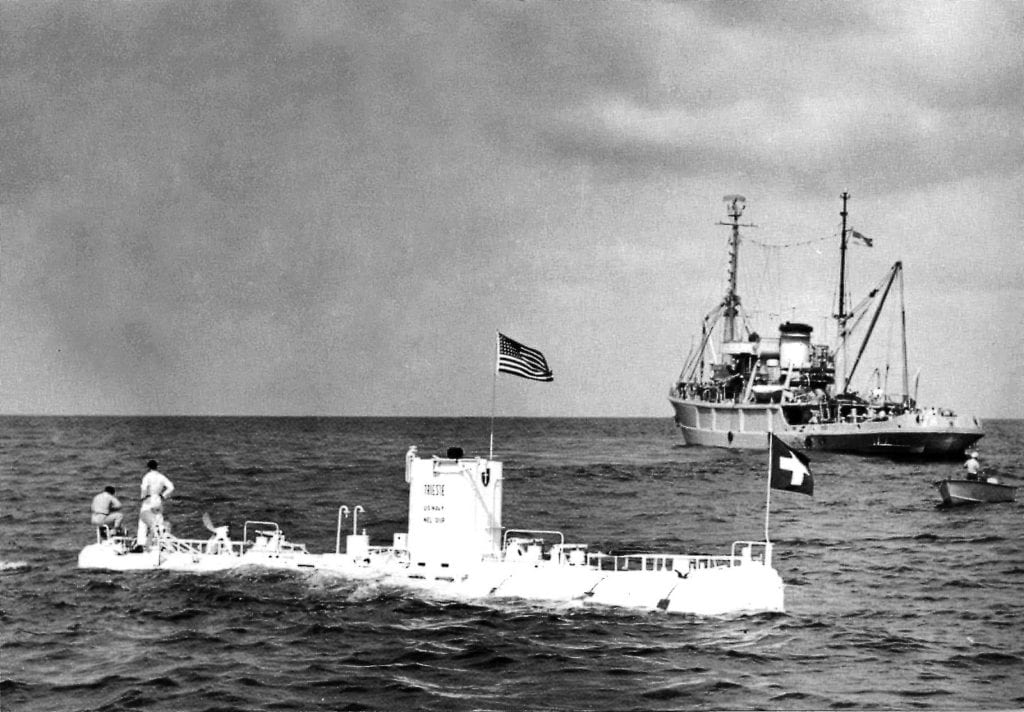
Another historic feat came in 1960, when a crew led by oceanographer Jacques Piccard aboard a vessel named the Trieste carried out the first manned exploration of Challenger Deep—the deepest known point of the Earth’s seabed. Attached to the hull of the Trieste was an experimental Rolex, the Oyster Deepsea Special. Having successfully reached Challenger Deep, Piccard surfaced and cabled Rolex to advise:
“HAPPY TO ANNOUNCE TO YOU YOUR WATCH AS PRECISE AT 11,000 METRES AS ON SURFACE. BEST REGARDS JACQUES PICCARD.”
From the 1940s onwards, as diving technology advanced, Rolex had become inextricably linked with feats in underwater exploration. Divers came to rely on the fine-tuned precision and robustness of their watches, which were capable of withstanding extreme pressures. This legacy endures to the present day, and is enhanced by one of the most significant achievements in modern human exploration.
The Deepsea Challenge
Around the time of the Jacques Piccard’s successful dive to Challenger Deep, a young Canadian boy named James Cameron was becoming obsessed with deep sea exploration. While he would grow up to become one of the most renowned directors in Hollywood, helming blockbusters like Titanic and Avatar, he never lost his fascination for the ocean.
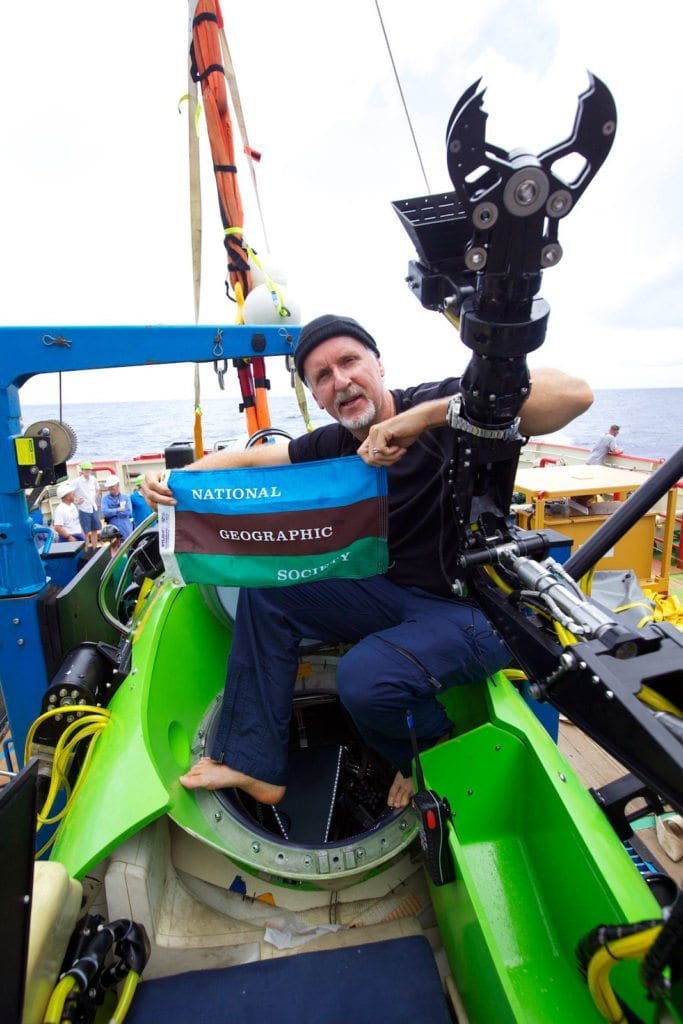
Fast forward to 2012: In conjunction with the National Geographic Society, Cameron plotted the first solo descent 11,000m through the Mariana Trench to Challenger Deep. Cameron intended to pilot a submersible he had designed himself, named the Deepsea Challenger.
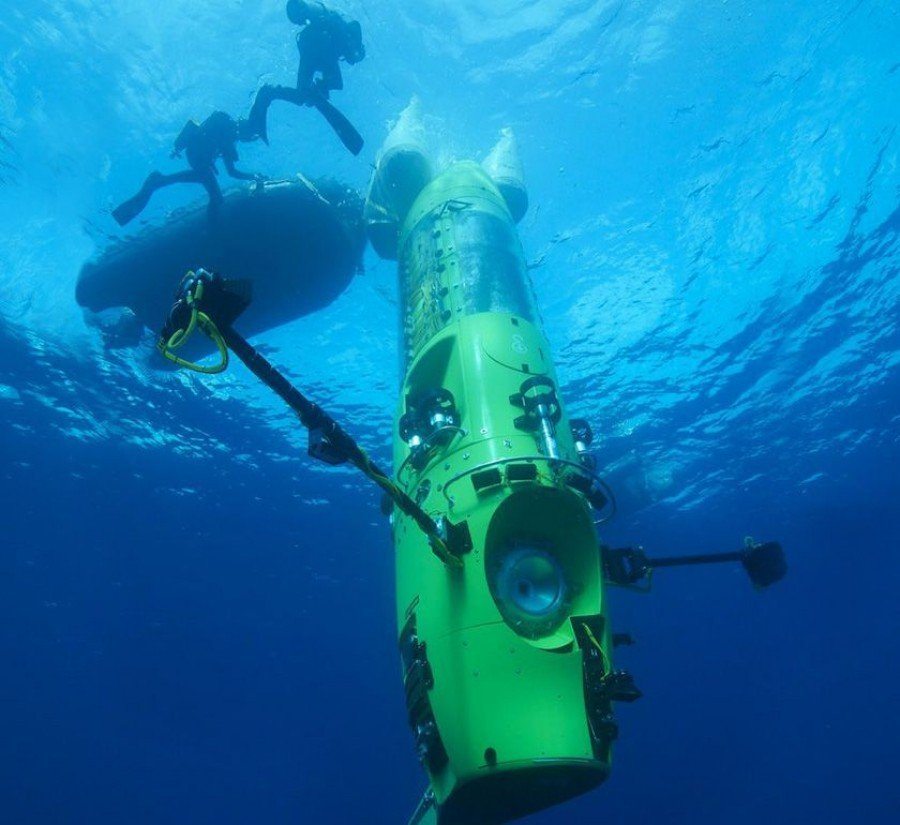
To put that 11,000m depth into perspective, if you sat Mount Everest in the trench, there would still be some 2000m of water above it.
With its prestigious history of underwater exploration, Rolex was a natural partner for the project.
Challenge Accepted
The designers at the Rolex headquarters in Switzerland were now faced with a substantial engineering task. At a depth of almost 11,000m, the pressure on the watch would be immense, the equivalent of 18 SUVs weighing down on it. Success depended on achieving precise dimensions for every component and ensuring the case was completely water resistant to protect the movement inside.
Taking the Rolex Sea-Dweller Deepsea as their blueprint, a select team of specialists went to work.
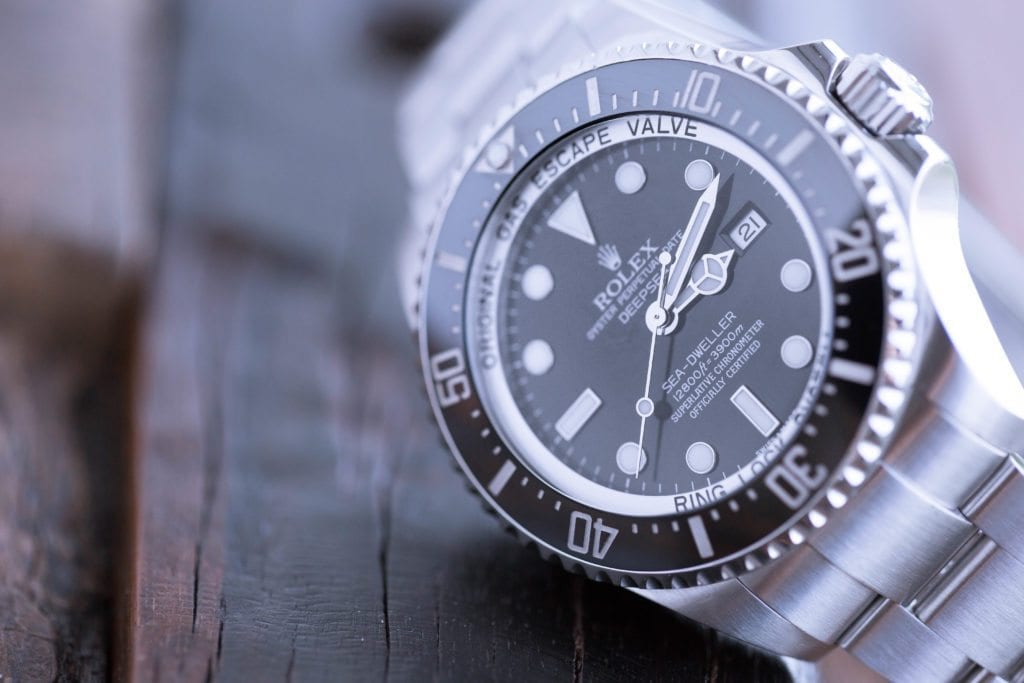
The Rolex Deepsea is a true diver’s watch, first shown at Baselworld in 2008. Key features included a unidirectional rotating bezel to measure the length of time underwater; a chromalight display; a helium escape valve to ease pressure, and the Ringlock system, featuring a 5mm thick sapphire crystal, a grade 5 titanium case and a steel central ring. After rigorous testing in a specially designed hyperbaric tank, Rolex was certain the Deepsea could reach depths of up to 12,800m.
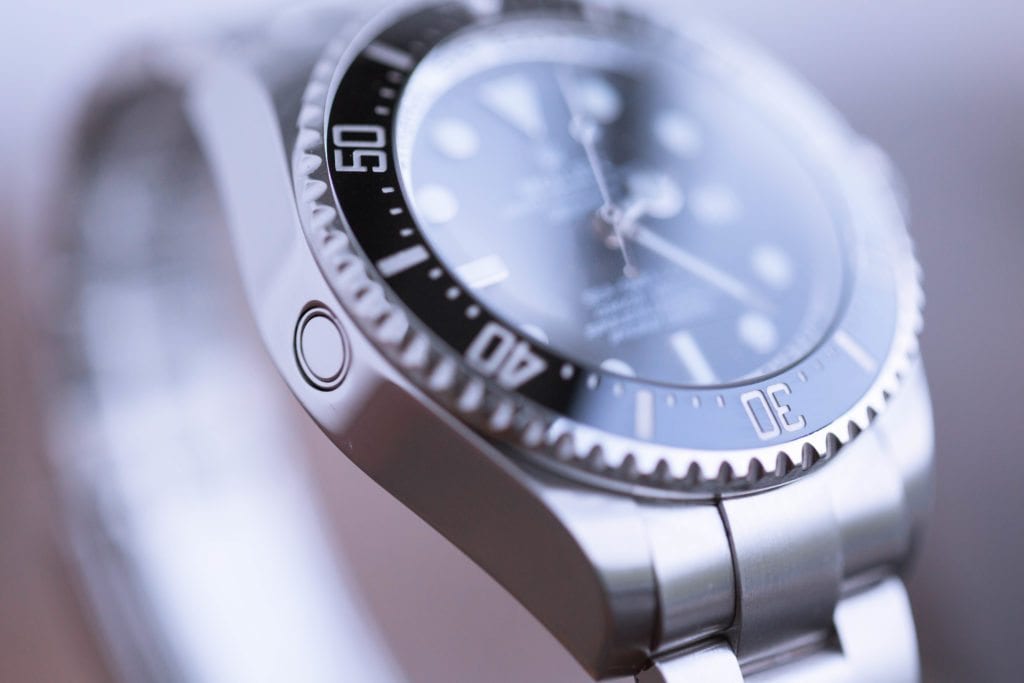
The design process was necessarily rapid, yet extremely detailed. Adjustments to the watch dimensions that might have seemed minor to the casual observer were vital in ensuring the watch would remain robust and waterproof. Exhaustive functional and chronometric tests followed—a nerve-wracking period even for a watch company experienced in complex and secretive tasks.
Precision Engineering
The Rolex Deepsea Challenge passed every test. Incredibly, in just over four weeks, the team had managed to design, engineer, and test a completely unique experimental model, incorporating the stylistic flourishes for which the brand is renowned along the way. But the mission was only half-complete. The ultimate test was about to begin.
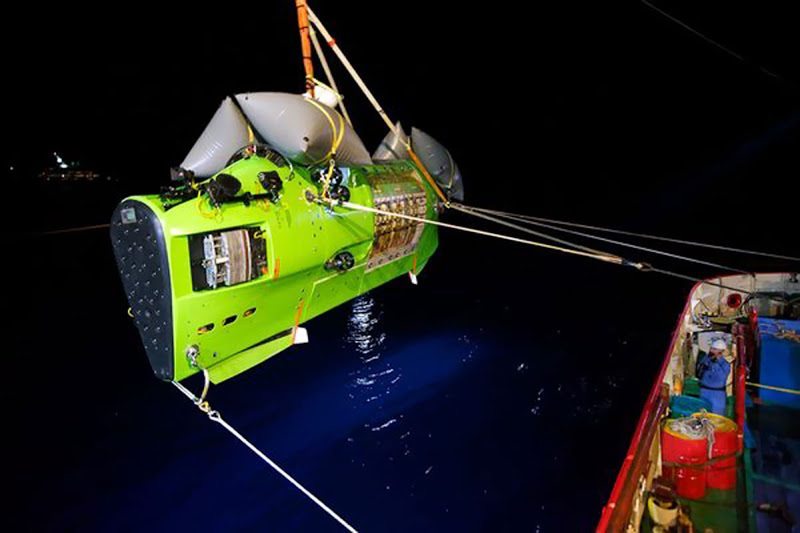
In late March 2012, the Deepsea Challenger left port in Guam, and Cameron announced he was ready to begin his descent. The Rolex Deepsea Challenge was attached to the vessel’s robotic arm, and just two hours later, Cameron successfully reached Challenger Deep. While several experimental technologies on the vessel failed at such an extreme depth, the Rolex Deepsea was observed to function perfectly throughout.
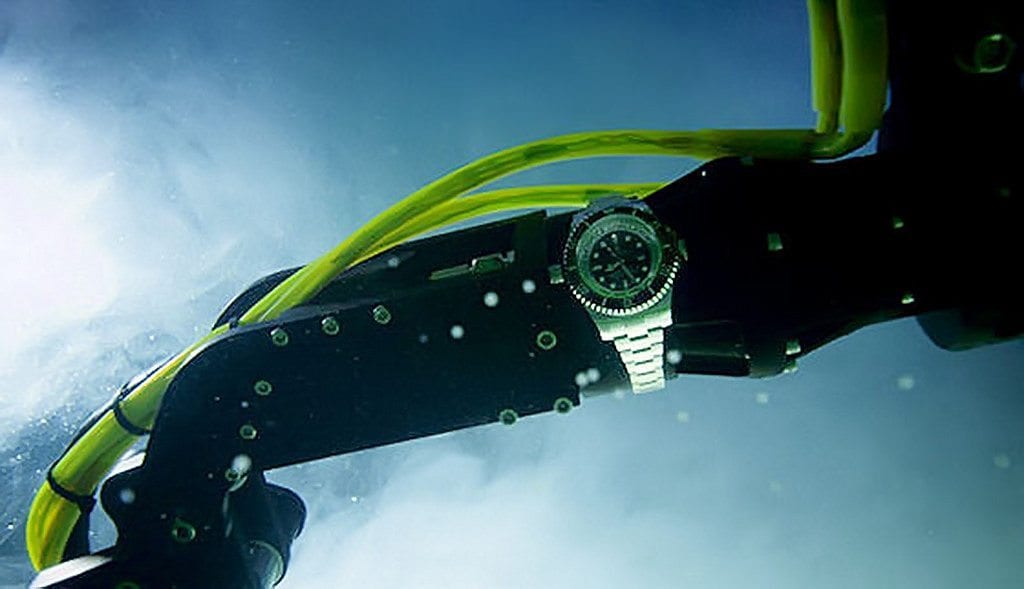
Mission accomplished.
The Sea-Dweller Deepsea D-Blue Dial
In commemoration of the Rolex Deepsea Challenge–and with a nod to the iconic Rolex Sea-Dweller that preceded it–in 2014 a special edition Rolex Deepsea D-Blue Dial was released.
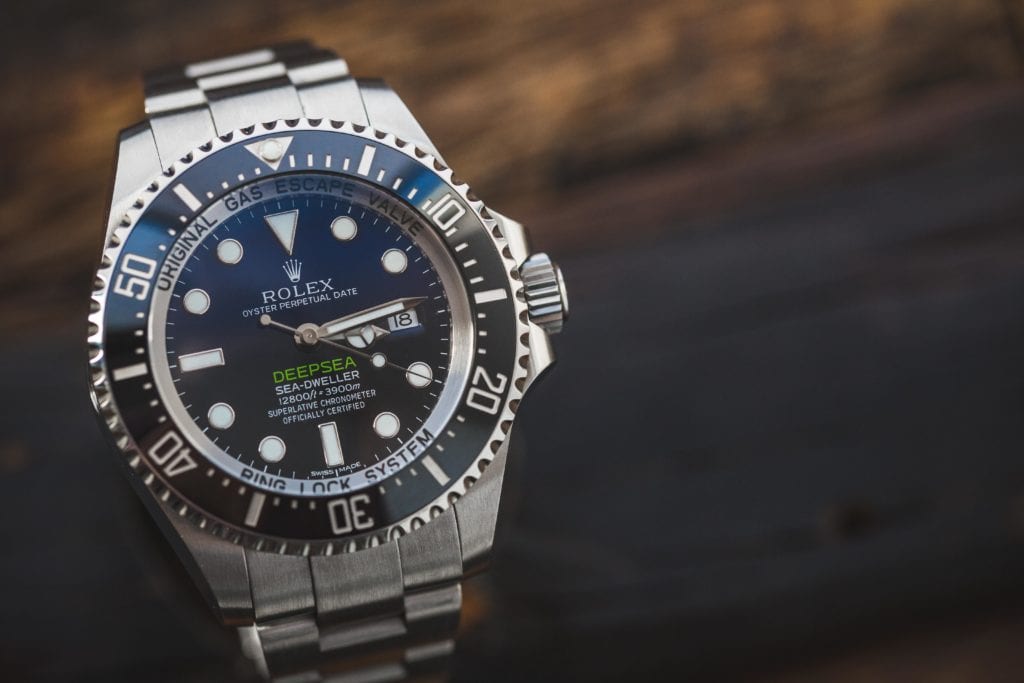
The Rolex Deepsea Blue’s two-tone dial sets the watch apart from the original, calling to mind Cameron’s groundbreaking descent through the Mariana Trench. The watch is large on the wrist, a 44mm stainless steel case holding a perpetual Calibre 3135 movement, precision-engineered to cope with shocks and variations in temperature.
A helium release valve, and a Glidelock system on the bracelet ensuring the watch can be easily slipped over over a wetsuit, demonstrate that besides its aesthetic appeal, the Rolex Deepsea is a supremely functional diver’s tool, with style and substance in equal measure.
Images ©: Header, 4-5, 7-8; Crown & Caliber. 1; U.S. Naval Historical Center. 2-3, 6; National Geographic Society.
Get More Articles Like This in Your Inbox
We're constantly creating great content like this. So, why not get it delivered directly to your inbox? By subscribing you agree to our Privacy Policy but you can unsubscribe at any time.





